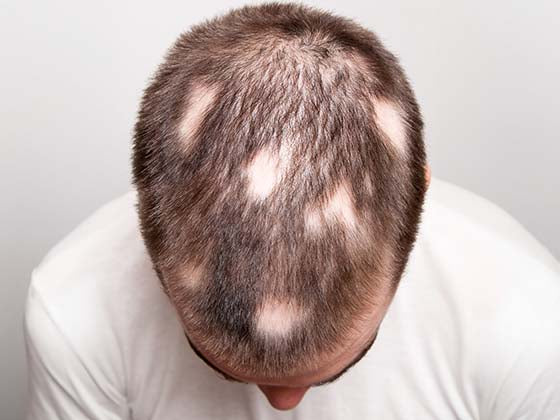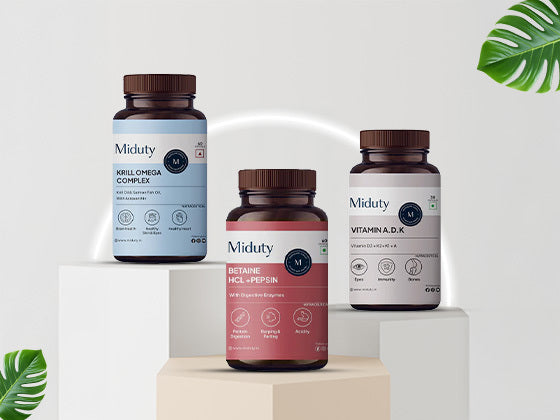Helmets are undeniably crucial safety gear, but some people worry they might be sacrificing their precious hair for protection. Fear not, riders! While helmet use can contribute to hair loss, it's not a guaranteed consequence. In this exploration, we'll separate myth from fact, uncovering how helmet design, wearing habits, and a few simple tricks can keep you safe and stylish.
Understanding Helmet-Related Hair Loss: The Facts and Myths

Contrary to popular belief, wearing a helmet itself doesn't directly cause hair loss. However, certain factors related to helmet use can contribute to hair thinning or breakage. This article aims to dispel myths and provide a factual understanding of how helmet design, wearing habits, and proper hygiene can influence your hair health while ensuring optimal safety. By following these guidelines, you can enjoy the peace of mind that comes with proper head protection without compromising the health of your hair.
Debunking Misconceptions: Separating Fact from Fiction

Dispelling misconceptions surrounding helmet hair offers a two-fold benefit. Firstly, it prioritizes safety by effectively addressing a potential barrier to consistent helmet use. Helmets demonstrably reduce the risk of head injuries in accidents, making them a vital safety measure. By clarifying the lack of correlation between helmets and hair loss, we encourage riders to prioritize safety without sacrificing their aesthetic preferences. Secondly, debunking these myths empowers riders with actionable knowledge. Discerning fact from fiction allows riders to make informed decisions regarding their hair care routine. This might involve selecting a comfortable, well-fitting helmet that minimizes friction, or implementing a post-ride hair care regimen that removes sweat and grime. Equipped with this knowledge, riders can navigate the world with both confidence and style, knowing they've taken proactive steps to protect both their head and their hair health.
Exploring the Science: How Helmets Impact Hair Health

Beneath the surface of the "helmet hair" myth lies some interesting science. Our hair follicles receive nourishment from blood flow, not directly from the air. So, the fear of helmets suffocating the scalp and causing hair loss is unfounded. Hair fall due to helmet has a different reason behind it. The pressure and friction caused by a helmet can indeed impact hair health. Tight-fitting helmets can snag or pull on strands, leading to breakage. Additionally, sweat buildup under a helmet can create a warm, moist environment that, if left unaddressed, could irritate the scalp and hinder healthy hair growth.
Understanding these factors empowers us to make informed choices. By selecting the right helmet and adopting proper after-ride hair care routines, we can minimise the impact on our locks while maximising safety.
Common Myths Surrounding Helmet Use and Hair Loss

Helmets are a non-negotiable safety essential, but the fear of "helmet hair" often deters people, especially those with long or styled hair. Here's the good news: while some helmet use habits can contribute to temporary hair woes, these are easily addressed! This guide dives into the science behind helmet-related hair loss myths, revealing the facts and offering practical tips.
1. Myth: Helmets suffocate your scalp, cutting off oxygen and causing hair loss.
Fact: Your hair follicles receive oxygen from your bloodstream, not the air. Helmets do trap some heat and moisture, but this doesn't affect oxygen supply.
2. Myth: Tight helmets yank on your hair, leading to breakage and thinning.
Fact: While an ill-fitting helmet can snag or pull on hair, a properly sized helmet should feel snug but comfortable, not constricting.
3. Myth: Sweating under a helmet clogs your pores and promotes hair loss.
Fact: Sweat itself doesn't cause hair loss. However, leaving sweat and grime on your scalp for extended periods can irritate the scalp and hinder healthy hair growth.
4. Myth: Wearing a helmet mattes your hair and makes it look dull.
Fact: This might be due to friction or improper care. Using a silk or satin liner under your helmet reduces friction, and post-ride hair care can restore shine.
5. Myth: Frequent helmet use weakens hair follicles, leading to permanent baldness.
Fact: Hair loss due to helmet use is usually temporary breakage or increased shedding, not permanent damage to follicles.
6. Myth: Certain helmet materials are worse for hair than others.
Fact: Material matters less than fit. Choose a breathable, comfortable helmet that fits your head shape for optimal hair health.
7. Myth: Washing your hair right before wearing a helmet is bad for your scalp.
Fact: Clean hair is less likely to trap sweat and dirt. However, avoid using heavy styling products that can clog pores.
8. Myth: You shouldn't do a ponytail or bun under your helmet because it pulls on your hair.
Fact: Tying hair is fine as long as it’s not too tight. Loose braids or a low bun are comfortable options.
9. Myth: Helmets are designed for men and don't account for women's hairstyles.
Fact: Many helmet manufacturers offer styles specifically designed for women's head shapes and hair lengths.
10. Myth: Helmets are uncomfortable and not worth the risk of hair loss.
Fact: A properly fitted helmet is essential for safety. With a few adjustments and good hair care practices, you can enjoy both protection and healthy hair.
Assessing the Impact: Factors Contributing to Helmet-Induced Hair Fall

While helmets themselves don't directly cause hair loss, certain aspects of helmet use can contribute to hair thinning or breakage. Here, we'll delve deeper into the key factors influencing hair health when wearing a helmet:
-
An ill-fitting helmet is the primary culprit. A helmet that's too tight can snag and pull on hair strands, leading to breakage. Conversely, a loose helmet can cause excessive friction as you ride, also causing helmet hair damage.
-
Sweat buildup under a helmet creates a warm, moist environment. If not addressed, this can irritate the scalp and hinder healthy hair growth. Leaving sweat and grime on your scalp for extended periods can clog pores and disrupt the natural balance.
-
Constant friction between hair and the helmet's interior lining can lead to breakage and split ends. The material of the lining also plays a significant role in helmet hair shedding. Rough or abrasive materials can exacerbate friction, while smoother, breathable fabrics can minimise it.
-
Tight hairstyles like ponytails or buns worn under a helmet can put additional strain on hair follicles, especially if the helmet is not snug. Opting for looser styles or protective measures like silk or satin liners can help reduce this stress.
By understanding these factors, we can make informed choices to minimize the impact on our hair health while maximizing safety, thereby preventing hair loss from helmets.
Understanding Helmet Pressure: Its Effects on Hair Follicles

While the fear of helmet pressure causing hair loss is common, the reality is more nuanced. Hair follicles receive their nourishment from blood flow, not directly from the air. So, helmet pressure itself doesn't directly starve follicles or cause permanent hair loss.
However, excessive pressure from an ill-fitting helmet can negatively impact hair health in a few ways:
-
Mechanical Stress: A tight helmet constantly pulls on hair strands, leading to breakage at the root or shaft. This can be particularly damaging for already weakened hair.
-
Reduced Blood Flow: Extremely tight helmets, in rare cases, could theoretically restrict blood flow to the scalp. While unlikely with proper fit, reduced blood flow could potentially limit nutrient delivery to hair follicles, impacting hair growth, thus causing helmet hair follicle damage.
-
Scalp Irritation: Chronic pressure from a tight helmet can irritate the scalp, creating an inflammatory environment. This can disrupt the natural hair growth cycle and potentially lead to temporary shedding hair thinning from helmets.
Remember, a properly fitted helmet minimises these risks. It should feel snug but comfortable, allowing for some movement of your scalp without pulling on hair.
Identifying Helmet Hair Damage: Signs and Symptoms

While helmet use itself doesn't cause permanent hair loss, certain signs can indicate potential damage due to improper fit, hygiene, or friction.
1. Increased Breakage: If you are noticing more split ends or hair strands snapping easily, it could be a sign of friction damage caused by a rough helmet lining or improper hair styling under the helmet.
2. Excessive Shedding: If you notice a significant increase in hair loss than usual, after wearing your helmet, it could be due to helmet scalp irritation or stress on the follicles from a tight fit.
3. Scalp Irritation: If the scalp feels itchy, red, or inflamed after wearing your helmet, it could indicate sweat buildup, friction, or an allergic reaction to the helmet lining material.
4. Uneven Hair Loss: Noticeably thinner patches, especially at the temples or forehead where the helmet makes contact, might indicate Helmet hairline receding, also referred to as the traction alopecia caused by constant pulling from a tight helmet or a ponytail worn underneath.
Remember, these signs can also have other causes. If you're concerned about hair loss, it's always best to consult a dermatologist or trichologist (hair specialist) for diagnosis and personalised advice.
Addressing Scalp Irritation: Minimizing Hair Loss Risks

While helmets are undeniably crucial for safety, the constant friction and pressure they exert can sometimes lead to scalp irritation. This discomfort can not only be unpleasant but also contribute to hair loss. However, fear not! By implementing a few simple strategies, you can soothe your scalp, minimise hair loss risks, and enjoy a comfortable, confident ride. Continue reading to know more!
Mitigating Hair Loss Risks: Strategies for Helmet Users

Scalp irritation is a common concern for helmet users, but the good news is there are certain effective strategies to minimize it and protect your hair health:
-
A properly fitted helmet is the cornerstone of scalp comfort. It should feel snug and secure without causing pressure points or pulling on your hair. Visit a reputable retailer for professional sizing guidance.
-
Develop a post-ride routine to remove sweat and grime. Wash your hair with a gentle shampoo like Sebamed Hair Care Everyday Shampoo and cool water. Consider using a microfiber towel to gently pat your scalp dry, avoiding harsh rubbing.
-
Choose a helmet with a breathable, moisture-wicking lining. Some helmets offer removable and washable liners for optimal hygiene. Consider investing in a silk or satin liner for added comfort and reduced friction.
-
Tight hairstyles can exacerbate scalp irritation, especially under a helmet. Opt for looser styles like braids or a low ponytail. If you really want to tie hair up, consider using a silk scarf to create a protective barrier between your hair and the helmet lining, so as to prevent helmet hair loss and other helmet-related hair issues.
-
After removing your helmet, apply a gentle scalp soother like BABE Aloe Vera Gel to calm any irritation. Also, use a balanced shampoo like Numis Med pH 5.5 Every Day Shampoo and conditioner like Re'equil Damage Repair Hair Conditioner suitable for your hair type for maintaining a healthy scalp environment.
-
Staying hydrated from within promotes healthy hair growth and can help prevent a dry, itchy scalp. Drink plenty of water throughout the day, especially before and after rides.
-
If you experience persistent irritation, redness, or excessive hair loss, consult a dermatologist or trichologist. They can diagnose the underlying cause and recommend appropriate treatment options.
By following these tips, you can minimize scalp irritation, promote healthy hair growth, and enjoy safe rides with confidence. Remember, a comfortable scalp is a happy scalp, and a happy scalp is the foundation for healthy, beautiful hair.
Proper Helmet Fit: Key to Hair Health

Proper helmet fit is the cornerstone of both safety and hair health. A helmet that's too tight might feel secure, but it can wreak havoc on your scalp and hair. Excessive pressure can cause constant pulling on hair strands, leading to breakage due to repetitive pulling. Furthermore, a tight helmet can restrict blood flow to the scalp, hindering the delivery of essential nutrients needed for healthy hair growth. On the other hand, a loose helmet offers little protection and creates unnecessary movement. This constant friction between the helmet and your hair can lead to split ends, breakage, and overall hair damage. Hence a proper helmet fit is very crucial for ensuring hair health.
Helmet Hair Care Tips: Protecting Your Tresses

Don't let helmet hair hold you back from enjoying the freedom of the road! Here are some practical tips to keep your locks healthy and stylish, even with consistent helmet use:
-
Avoid tight hairstyles like high ponytails or buns, instead opt for looser braids or a low ponytail secured with a soft scrunchie.
-
Drink plenty of water as it helps maintain scalp health and promotes healthy hair growth.
-
Consider wearing a silk or satin scarf or liner under your helmet as it creates a smooth barrier that reduces friction and helps prevent tangles.
-
After removing your helmet, prioritise removing sweat and grime.
-
Apply a lightweight conditioner to replenish moisture lost during your ride.
-
For extra frizz control, use a leave-in conditioner like Q-Sera Leave-In Conditioner or hair oil specifically formulated for your hair type.
-
Consult a dermatologist if you want to understand your hair and scalp type.
-
Apply aloe vera gel or other skin soothing ingredient, in case any irritation is experienced.
-
Regularly clean your helmet's removable lining according to the manufacturer's instructions. This removes sweat, dirt, and bacteria that can irritate your scalp.
-
Choose a helmet with a breathable, moisture-wicking lining. Some helmets offer removable and washable liners for optimal hygiene.
-
Maintain a balanced diet rich in essential vitamins and minerals to promote healthy hair growth from the inside out.
-
Avoid harsh brushing or styling, especially when your hair is wet.
-
Regular trims can remove split ends and prevent further breakage.
By incorporating these tips into your routine, you can minimize the effects of helmet use on your hair and enjoy a comfortable, confident ride every time. Remember, a healthy scalp is the foundation for healthy hair, so prioritize both safety and hair care for a winning combination!
Preventive Measures: Shielding Hair from Helmet-Related Damage

Helmets are crucial for protecting your head in case of an accident. No amount of hair loss compares to the potential head injuries prevented by a helmet. However, if one indulges in proper helmet hair care, one can easily prevent hair loss caused by helmets. By following the preventative measures mentioned above like ensuring a helmet purchase from a reputed dealer and effectively checking the material of the helmet lining to doing proper hairstyles and indulging in post helmet hair care routine can prove to be very effective in minimising helmet hair breakage and helmet pressure hair loss.
In short, preventive measures are a win-win. They prioritise safety by encouraging consistent helmet use and empower you to maintain healthy hair, allowing you to navigate the world with both confidence and style.
Beyond Hair Fall: Ensuring Healthy Hair Underneath Helmets

While the focus often falls on hair loss, the impact of helmets extends beyond split ends and breakage. Friction and sweat accumulation under a helmet can disrupt the scalp's delicate ecosystem, potentially leading to irritation and hindering healthy hair growth. Fortunately, by implementing a few preventative strategies, we can not only protect our hair but also promote a healthy scalp environment, ensuring a comfortable and confident ride.
Maintaining Scalp Health: Hygiene Practices for Helmet Wearers

Maintaining proper hygiene is crucial for helmet wearers. Sweat buildup and friction can lead to scalp irritation and damaged hair. However, implementing a simple routine can keep your scalp healthy and hair looking its best. This includes pre-ride steps like avoiding tight hairstyles and using a silk liner, post-ride practices like gentle cleansing and conditioning, and regular helmet cleaning. Remember, a clean helmet and proper hair care are key to a comfortable ride and healthy hair.
Hair Growth Support: Remedies for Helmet-Induced Hair Loss

While helmets themselves don't directly cause hair loss, certain factors associated with helmet use can contribute to thinning or breakage. However, don’t worry, as we at Clinikally have some remedies to control hairfall. Here are some strategies to support healthy hair growth and minimise the impact of helmets:
1. Scalp Care:
-
After removing your helmet, prioritize washing your hair with a gentle shampoo like Densita Everyday Clarifying Shampoo and cool water to remove sweat and grime. Harsh chemicals or hot water can strip the scalp of natural oils, hindering hair growth.
-
Consider a gentle scalp scrub once a week to remove dead skin cells and promote healthy circulation to the scalp, which can benefit hair growth.
-
If you experience persistent scalp irritation, consult a dermatologist about targeted treatments to promote a healthy scalp environment.
2. Hair Care:
-
Conditioning Counts: Regularly use a lightweight conditioner like Hairdew Max Conditioner to replenish moisture lost during rides. Consider a leave-in conditioner for added protection.
-
Dietary Support: Maintain a balanced diet rich in essential vitamins and minerals like iron, biotin, and vitamin D, which contribute to healthy hair growth.
-
Supplements: Consult a doctor before taking any hair growth supplements.
3. Hair Habits:
-
Minimize Heat Styling: Excessive heat styling can damage hair. Opt for air drying whenever possible.
-
Gentle Detangling: Use a wide-tooth comb and detangling spray to minimize breakage when brushing your hair, especially after a ride.
-
Regular Trims: Schedule regular trims (every 6-8 weeks) to remove split ends and prevent further breakage.
By incorporating these hair growth support strategies along with preventive measures, the adverse effects of helmet usage can be minimised, and healthy, strong hair can attained. Remember, a healthy scalp is the foundation for healthy hair growth, so prioritise both for optimal results.
Empowering Helmet Users: Tips for Healthy Hair Growth

By following these practical tips, helmet users can feel empowered to prioritize both safety and healthy hair growth. Remember, a properly fitted helmet, combined with good hygiene practices, preventive measures, and hair growth support strategies, allows you to navigate the world with confidence – both in your safety and the look of your locks.
Final Conclusion: Balancing Helmet Safety and Hair Health

Thus, inculcating a hair care routine and choosing a proper helmet ensures that hair is maintained without compromising the head safety. Thus, it is recommended to always indulge in preventative care as it goes a long way!!
































